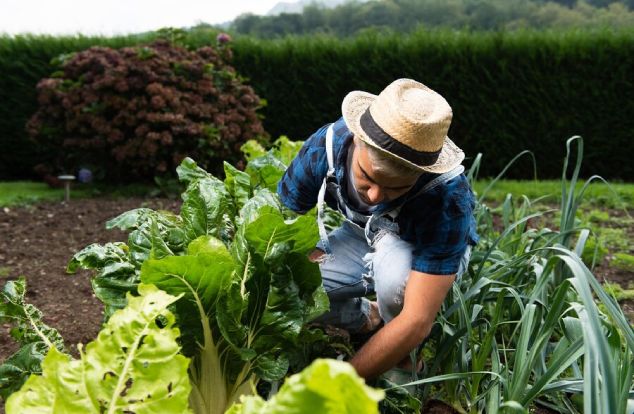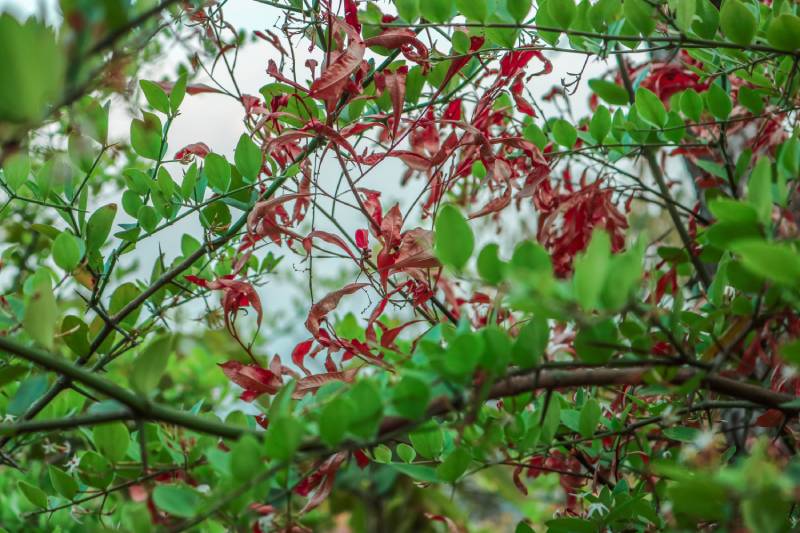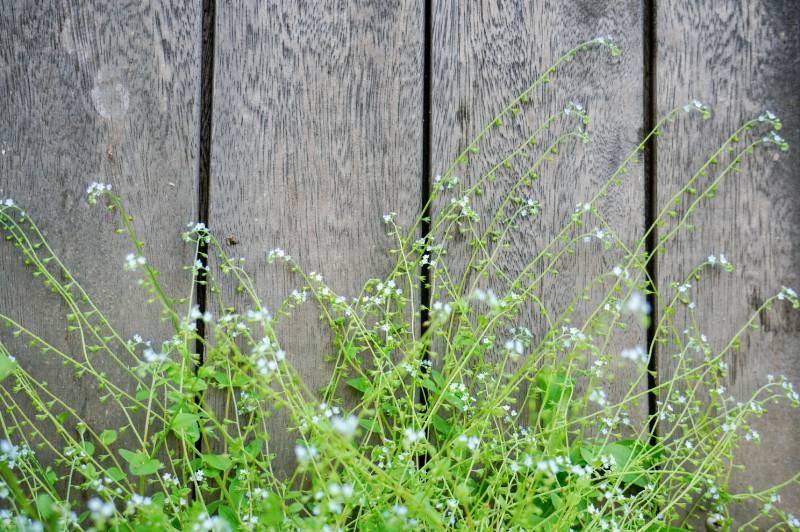Planting, Growing, and Harvesting Swiss Chard

If you enjoy leafy greens, you might want to try growing a crop of multicolored Swiss Chard. Chard is an excellent substitute for spinach and kale for vegans and keto dieters. It is a little crunchier than spinach but soft. Chard is technically a beet. Because of the curvature of its leaves, it is referred to as a “gofootose” plant.
Like beets, chard stems and leaves can be eaten cooked or raw. Swiss Chard is a prolific plant, so leave lots of room in your garden bed for it! Salads, portions of pasta, pizzas, quiches, sandwiches, and other dishes benefit from their mild flavor. Chard is typically planted as a cool-season crop since it grows swiftly and efficiently in the milder spring and fall weather, but it can also tolerate hotter temperatures. Although Chard’s growth slows in the summer, its better heat tolerance makes it a perfect salad green to grow when the weather gets too hot for the others.
Chard is a superfood that contains a lot of vitamins A, C, and K. It doesn’t have the bitter flavor of many other greens, and it’s an excellent substitute for spinach or kale if you don’t like those superfoods. Chard is a beautiful edible ornamental plant that comes in various colors to blend with landscape or pots and its benefits as a garden food. You might even use a Chard alone or combined with flowers in a vase or bouquet. Why should flowers be the only ones having a good time?
How to plant a Swiss Chard?
- It’s easy to learn how to grow Swiss Chard in the garden, and the plant flourishes once you do. Chard thrives in a sunny or somewhat shady environment.
- Your garden’s soil should be loose enough to allow for proper drainage. Plant eight to ten seeds per foot, approximately a half-inch deep, in a row in the ground.
- Maintain a distance between your rows of around 18 inches (20 cm).
- Thin the plants to four to six inches apart when they’re a couple of inches tall (5 cm) (10-15 cm.). Chard is a relatively simple vegetable to cultivate.
- It only needs sufficient space, water, and sometimes fertilizer.
What is the Best Time to Plant Swiss Chard?
- In the spring, sow chard seeds at least 2 to 3 weeks before the last spring frost date.
- For a fall crop, sow chard seeds roughly 40 days before the first frost date. (Many are hardy enough to endure a little frost.)
- Before planting, immerse seeds in water for 24 hours to speed up germination.
Swiss Chard Planting Instructions:
- Apply a 5-10-10 fertilizer to the area when it’s time to plant.
- Sow seeds 18 inches apart, 1/2 to 1 inch deep, and 2 to 6 inches apart in rows 18 inches apart.
- Plant seeds every ten days over the next month.
- Plants grow out to 4 to 6 inches apart when they are 3 to 4 inches tall and thin, or 6 to 12 inches apart if they are big.
- To avoid damaging nearby plant roots, use scissors. The cuttings are edible.
- Chard grows well without fertilizer, but if yours is still little in the middle of the season, give it a boost with a balanced fertilizer.
- Water it evenly and consistently to help it flourish. Water your plants regularly during the summertime when it is hot and dry.
- Mulch the plants to help them retain moisture and keep weeds at bay.
- Cut the leaves down to 3 to 5 inches when the plants are about a foot tall to foster new, delicate growth. As chard plants grow larger, their flavor diminishes. Everything you want to consume should be cut up.
Pests and diseases that may occur
- Aphids
- Leaf miners
- Cercospora leaf spot
- Slugs
Available Varieties
- Bright Lights has dark green foliage with multicolored stems that are resistant to bolting but not frost hardy.
- ‘Ford hook Giant is a small plant with dark green foliage and white stalks.
- ‘Lucullus’ is a heat-tolerant plant with green leaves and white stalks.
- ‘Peppermint’ has green leaves with pink-and-white striped stems; it’s a good container plant.
- ‘Rainbow’ has red, pink, white, yellow, orange, and striped leaves and stems.
- ‘Rhubarb’ has dark green leaves and rich red stalks; sow after the danger of frost has passed. Otherwise, it will bolt.
- ‘Ruby Red’ has green leaves and vivid red stems; sow after the danger of frost has passed. Otherwise, it may bolt.
When to do Harvesting?
- Harvest when the plants are 6 to 8 inches tall, depending on the size of the leaves you want.
- With a sharp knife, cut off the outer leaves 1-1/2 inches above the ground. The plant’s centre should not be affected. Everything you want to consume should be cut up.
- Harvest on a regular basis to keep the plants producing. Harvest the largest, oldest leaves and leave the younger ones to continue growing using the “cut and come again” approach.
- Lift the plant with its roots in the soil and place it in a greenhouse container to lengthen the harvest. Maintain a temperature of approximately 50 degrees Fahrenheit. The Chard will appear limp at first, but it will recover.
How to Keep Swiss Chard Fresh
- Rinse the Swiss chard leaves and store them in the refrigerator in plastic bags.
- We detach the leaves by slicing the ribs with a sharp knife.
- Leaves are used to make greens. You can eat them fresh or cooked like spinach, depending on your taste.
- As with asparagus, the ribs can be steamed, roasted, or sautéed.
Conclusion
The leaves and stems can either be eaten raw or cooked, together or separately. Like many other greens, Chard has a slightly bitter flavor that becomes mild and flavorful as it cooks.
Consider chopping up the leaves and stalks separately while preparing it. You may remove the cooked leaves while leaving the more rigid stems to cook until tender. The plant has many health benefits and consists of vitamins. It is gaining popularity as a healthy leafy vegetable which Is easy to grow in your home garden. Enjoy these healthy vegetables with different cooking recipes and add more flavor to food.





Leave a Reply